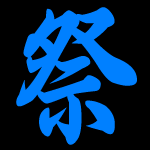
2012.04.02: Matsuri (Festival)
In Japan, cherry blossoms (sakura) are a big deal. Weather forecasts, both in print and on TV, give detailed daily reports on the blooms city by city, and sometimes park by park, even accompanied by still photos and live broadcast. Cities have festivals and parades timed around the blossoms, and many Japanese take part in an activity called hanami. "Flower viewing" would be the direct translation, but as with most direct translations, the phrase is largely inaccurate. A more correct translation would be, "Sitting under trees and drinking in public all afternoon long." In fairness, the flowering trees provide an excellent backdrop for an alcoholic picnic. Often times, groups will send out a couple people to camp out prime spots, as competition can be fierce.
I timed Abby's arrival to (hopefully) coincide with the hanami season, although this year was unusually cold. For the first several days, the trees around our home city of Okazaki were barely budding. But since this was the first day of Okazaki's week long sakura festival, and we'd miss the rest of it traveling around other parts of Japan, I thought it would be nice to walk to the park around Okazaki Castle, and show Abby some of the city along the way.
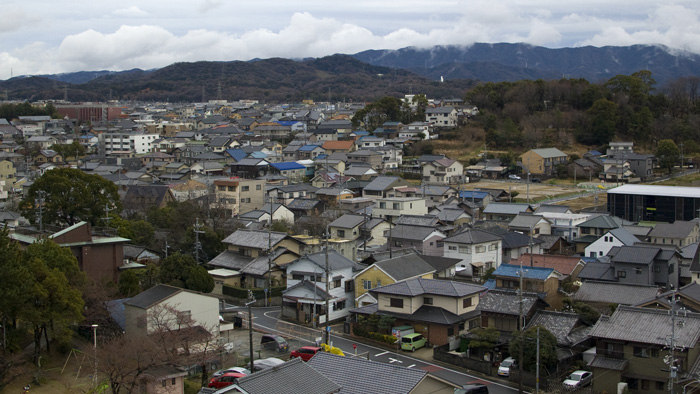
The view from Taeko-san's apartment before we set out.
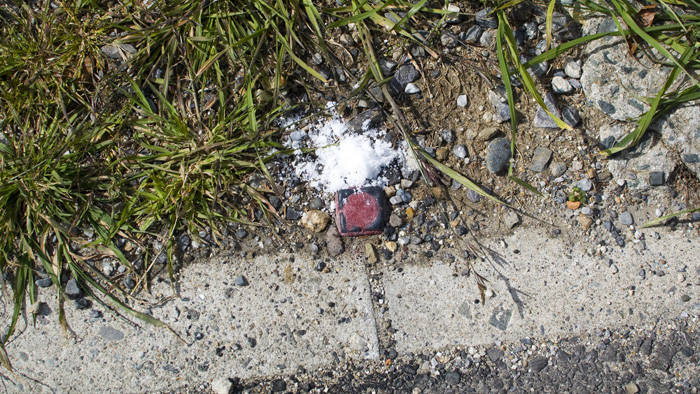
This picture doesn't really fit in with the rest of this post, but we walked past this small pile of salt on the way to the castle. In the Shinto religious tradition, salt is used to purify the land and bring good luck. In this case, someone had likely recently purchased the property and sprinkled salt in the corners of the plot. This does not mean the owners are particularly religious; the purification ceremony is just something people do. The act is more cultural than religious, a gesture of respect toward the land and its previous owners—and if that happens to bring about good luck, all the better.
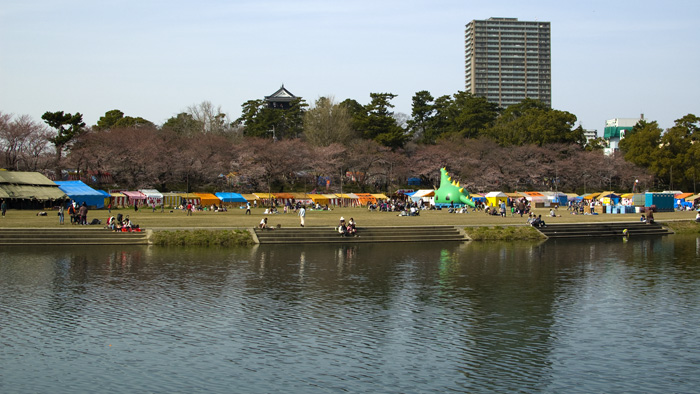
Okazaki Park from across the Oto River. Susceptible to flooding, the large, flat riverbank is kept undeveloped and is treated as a public park. (Kind of like the River Park in my hometown of Muscatine.)
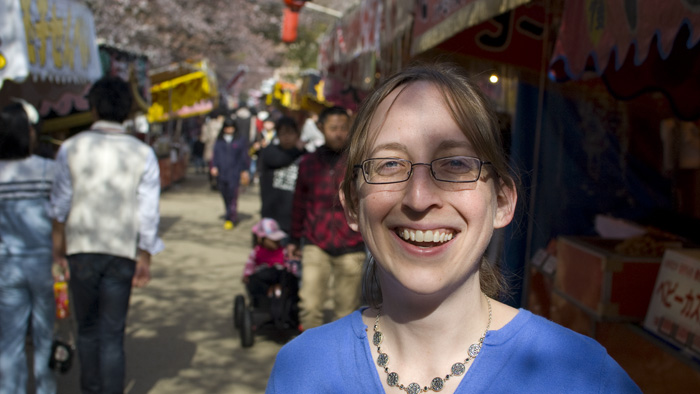
Abby standing in front of festival tents. The stalls are right out of a small town fairground, although as you'll see, with a decidedly Japanese twist.
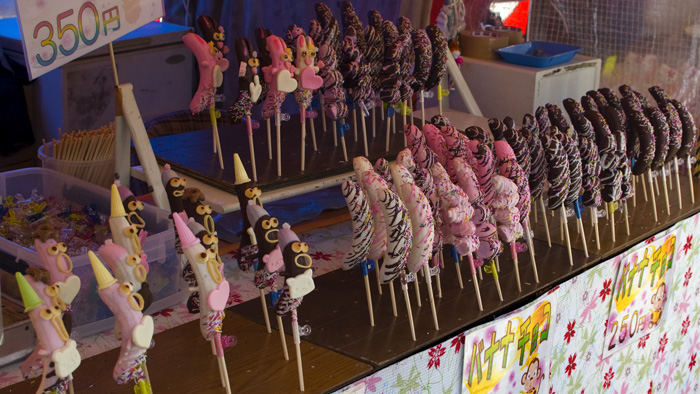
Chocolate-coated Bananas on a stick. Other popular food venders include tako yaki (octopus and batter formed into horrifying gooey lumps), yaki soba (stir-fried soba noodles with pork, cabbage, and onion. Kind of like chow mein), and okonomiyaki (probably best described as a savory pancake).
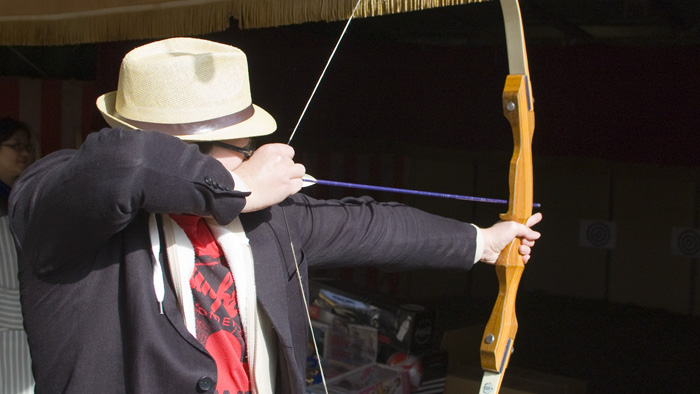
Some of the prize stalls would be very familiar to an American, including pitching baseballs at stacked blocks, BB gun target shooting, and darts. I'm not sure if we have any archery booths in Iowa though—which is a shame, because Chris had a lot of fun totally nailing the targets (Winning a prize of some terrificly cheap candy—just like home). Chris is an English teacher for a couple of the city schools and films supplemental videos shown at all the local elementary schools. He's a local celebrity among the schoolchildren, and a small crowd of grade-schoolers formed around, cheering and shouting to their friends, "Look! It's Chris!"
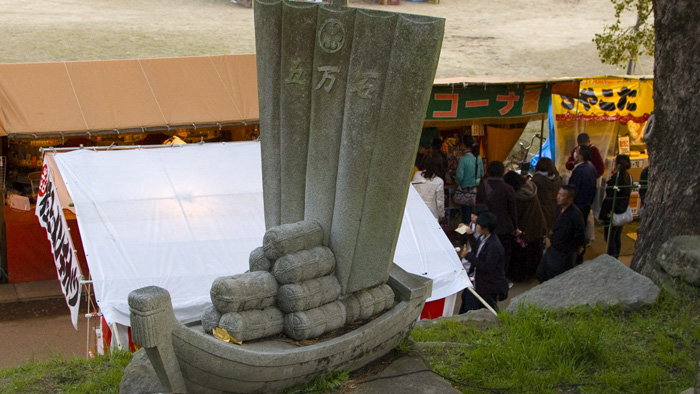
A sculpture in Okazaki Park. The ship reads gomangoku, which is a reference to the size of the region's economy during the time of Japan's first shogun (and Okazaki native) Tokugawa Ieyasu. Gomangoku, or fifty thousand koku of rice (one koku being about enough to feed one person for one year), was actually a fairly small amount. That a personage of Tokugawa's importance (and many other famous clans including the Honda, the Mizuno, and the Matsudaira) came from a relatively modest region was—and is—a point of pride for the locals.
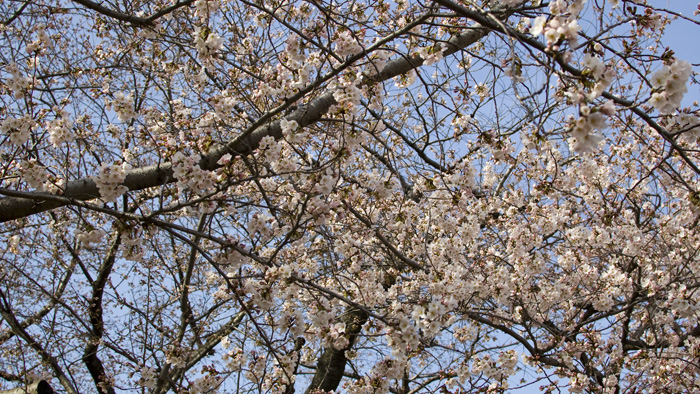
Sakura at Okazaki Park.
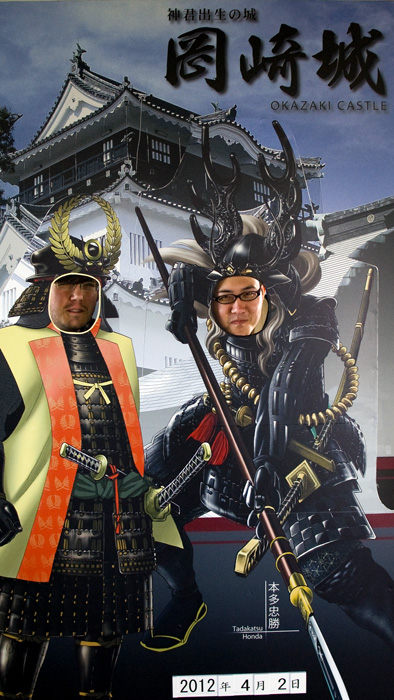
Me as Tokugawa Ieyasu and Chris as Honda Tatadatsu. The two men are important figures from Japanese history, although Chris and I know them best from the PlayStation 2 game Samurai Warriors, which is about as historically accurate as would be a game about George Washington and Benjamin Franklin gunning down entire Redcoat regiments and dueling against King George III. Now that I'd play.


